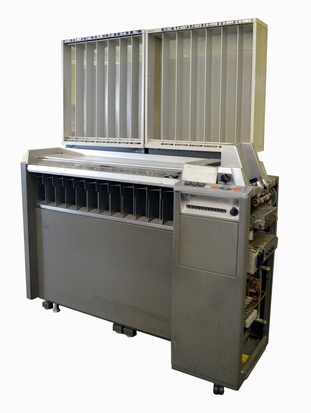IBM 83 Card Sorter
- Company :
- IBM
- Gallery :
- Pictures of 83 Sorter
The IBM 83 sorts 1000 cards per minute. The basic operation of the card sorter takes a punched card, uses mechanical sensors, examines a single column and places the card into the corresponding pocket. There are twelve rows on a punch card and thirteen pockets in the sorter. One sorter pocket is for "reject" cards (without a punch or sorter feed errors)
Cards pass through the sorter face down with the bottom edge ("9-edge") first. A single small metal brush is positioned so as each card goes through the sorter, a single column passes under the brush. When a hole in that column is detected, an electric circuit is formed directing the card to the correct pocket.
Multiple column sorting is done by first sorting the least significant column, then proceeding column by column to the most significant column. This is a "radix sort."
Numbers have one punch per column in rows 0-9. A numeric column can be sorted in a single pass through the sorter.
Alphabetizing is handled by sorting cards twice on the same column. The first sort is on rows 1-9, then on the "zone" rows 12,11, and 0. Operator switches allow zone-sorting by "switching off" rows 1-9 for the second pass of the card for each column.

